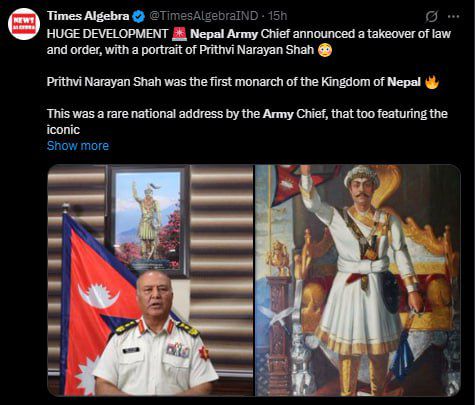
Nepal is currently experiencing a significant political crisis, marked by widespread protests, the resignation of Prime Minister K.P. Sharma Oli, and a subsequent military intervention.
The Spark: Social Media Ban and Public Outrage
The unrest began when the government imposed a controversial social media ban, which was later lifted. This move ignited mass protests, primarily led by the youth, who are increasingly disillusioned with corruption and limited economic opportunities. The demonstrations escalated into violent clashes, resulting in the deaths of at least 30 individuals and injuries to over a thousand .
Political Fallout: Prime Minister Resigns
Amidst the chaos, Prime Minister K.P. Sharma Oli resigned on September 9, 2025. Reports suggest that he sought military assistance from Army Chief General Ashok Raj Sigdel to ensure his safe exit . Following his resignation, several government buildings, including the Parliament and the President’s office, were set ablaze .
Military Intervention: Army Takes Charge
In response to the escalating violence, the Nepal Army imposed a nationwide curfew and took control of key areas, including Kathmandu’s Singha Durbar and the airport. Army Chief General Ashok Raj Sigdel announced that the military would oversee law and order operations, urging protesters to halt their activities and engage in peaceful dialogue .
Public Sentiment and Calls for Change
The protests, dubbed the “Gen Z protests,” reflect deep-seated frustrations among the youth regarding government corruption and economic challenges. Social media campaigns like #NepoKid have highlighted the disparity between the elite’s lifestyles and the struggles of ordinary citizens . Protesters are now advocating for former Chief Justice Sushila Karki to lead a transitional government .
